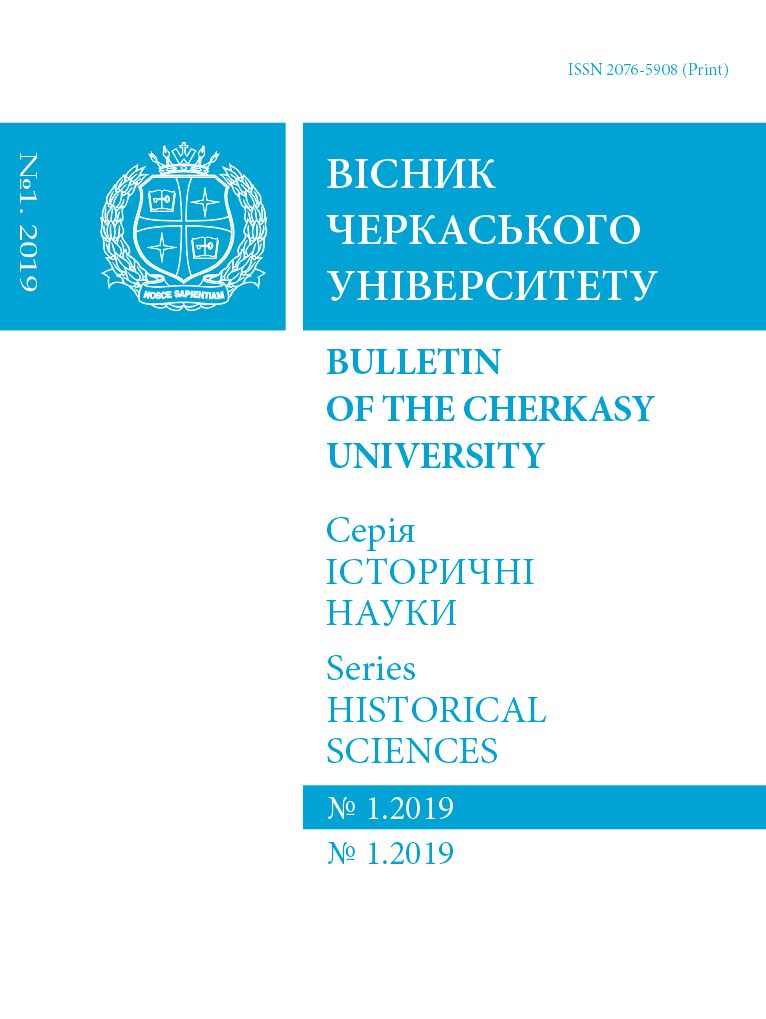The position of the Orthodox Church in the territory of the Donetsk region during the interwar period
Main Article Content
Abstract
Introduction. At the beginning of the 21st-century third decade, the Orthodox Church separated from the state, but not isolated from society and its problems, in the solution of which it is called to play a noble and consolidating role. However, it still going through difficult times today: it is divided into several branches, each of which claims the role of the spiritual shepherd of the Ukrainian people. A special page in church history is the tragic 1920s-1930s of the 20th century — the period when the foundations of the Orthodox Church's relations with the Bolshevik Party and Soviet authorities were formed, which were reflected in Ukrainian state-church relationship in the following decades.
Purpose. The purpose of the research is a complex-historical analysis of the place of the Orthodox Church in the anti-religious interwar period Soviet government policy on the territory of the Donetsk region.
Main Results of the research. The article is devoted to the study of the problem of state-church relations in the 1920s-1930s of the 20th century. The authors analyse and summarize the peculiarities of the campaign for the nationalization of church values, and the Soviet authority's repressive anti-church policy on the territory of the Donetsk region in the interwar period.
Originality of the research results. The authors note that the influence of the Orthodox Church on the social and political life of the Donetsk region has not yet been the subject of a special study, and therefore the study of the role of Orthodoxy in the 1920s and 1930s will provide an opportunity to fill the existing factual gaps in the relationship between the state authorities and the Orthodox Church on the territory of Donetsk region.
Conclusion and proposition of the authors. Based on the factual material of the study, it can be stated that the Bolshevik government from the first years of being in power on the territory of the Donetsk region, declared its intention to fight for the affirmation of communist political and worldview ideals in society, imposing its own social and spiritual values on the people. For the new government, the Orthodox Church became a political and ideological opponent and, as a result, a political enemy.
Article Details
References
Рубан М. Інституційний розвиток православної церкви на Донеччині 1920-1930 рр. Наукові записки Тернопільського національного педагогічного університету ім. В.Гнатюка. Серія "Історія", Вип. 2. Частина 2. 2016. С. 127-130.
Фесенко А. М. Розвиток обновленського руху в східному регіоні України у 20-х рр. ХХ ст. Схід. 2006. №3. С. 76-82.
Майстренко В. Українська автокефальна православна церква в історії Слобожанщини та Донбасу (1926–1930 рр.). ВХНУ. 2008. № 816: Історія. Вип. 40. С. 145–159.
Войналович В., Кочан Н. Релігійний чинник етнополітичних процесів на Донбасі: історія і сучасність. Київ. 2014. 304 с.
Луковенко І.Г. Православні храми Донеччини XVII — початку XX ст.: Довідник. Київ : Відділення релігієзнавства Інституту філософії ім. Г.С. Сковороди НАН України. Видавництво Руслана Халікова,. 2021. 354 с.
Протоколы № 3, 4, 6–26; 28–56 заседаний Политбюро ЦК КП(б)У. ЦДАВО України (Центр. держ. архів вищ. органів влади та упр. України). Ф. 1. Оп. 6. Спр. 29. Арк. 12, 50.
Статистичні відомості про діяльність українських православних парафій. (1922 р.). ЦДАВО України (Центр. держ. архів вищ. органів влади та упр. України). Ф. 3984. Оп. 1. Спр. 274. Арк. 97.
Месячные отчеты, организационный план, доклады о работе Донецкого губкома КП(б)У. (30 июля 1921 – август 1922 г.). ДАДО (Держ. архів Донецької області). Ф. 76. Оп. 1. Спр. 432. Арк. 106.
Никольский В. Православное духовенство Донеччины, репрессированное в 1920-1950-х годах (в документах и материалах). Донецьк: вид-во ДонНУ. 2013. С.24-25.
References
Ruban M. (2016) Institutional development of the Orthodox Church in Donetsk region 1920-1930. Ternopil. (in Ukr.).
Fesenko A. M. (2006) The development of the renewal movement in the eastern region of Ukraine in the 20s of the 20th century. Donetsk. (in Ukr.).
Maistrenko V. (2008) The Ukrainian Autocephalous Orthodox Church in the history of Slobozhanshchyna and Donbass (1926–1930). Kharkiv. (in Ukr.).
Voinalovych V., Kochan N. (2014) The religious factor of ethnopolitical processes in Donbas: history and modernity. Kyiv. (in Ukr.).
Lukovenko I.H. (2021) Orthodox churches of Donetsk region of the 17th and early 20th centuries. Handbook. Kyiv. (in Ukr.).
Protocols No. 3, 4, 6–26; 28–56 meeting of the Politburo of the Central Committee of the CP(b)U. (1922 р.). Central State Archive of Higher Authorities and Administration of Ukraine. Kyiv. (in Russ.).
Static information on the activity of Ukrainian Orthodox parishes. (1922). Central State Archive of Higher Authorities and Administration of Ukraine. Kyiv. (in Ukr.).
Monthly reports, organizational plan, reports on the work of the Donetsk Provincial Committee of the CP(b)U. (July 30, 1921 - August 1922). State archive of Donetsk region. Donetsk. (in Russ.).
Nikolsky V. (2013) Orthodox clergy of Donetsk, repressed in 1920-1950s (in documents and materials). Donetsk (in Ukr.).

